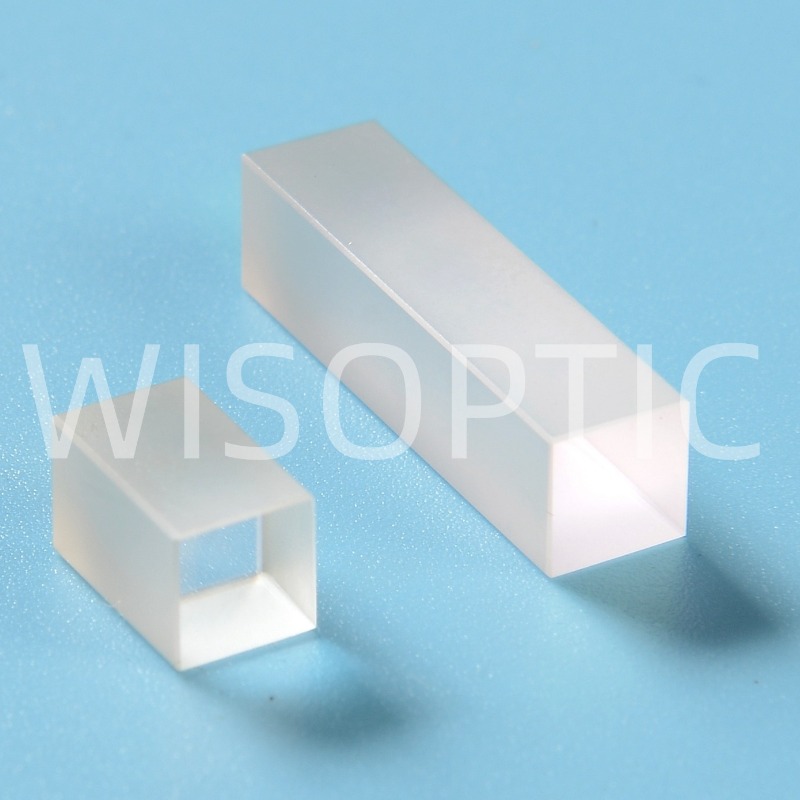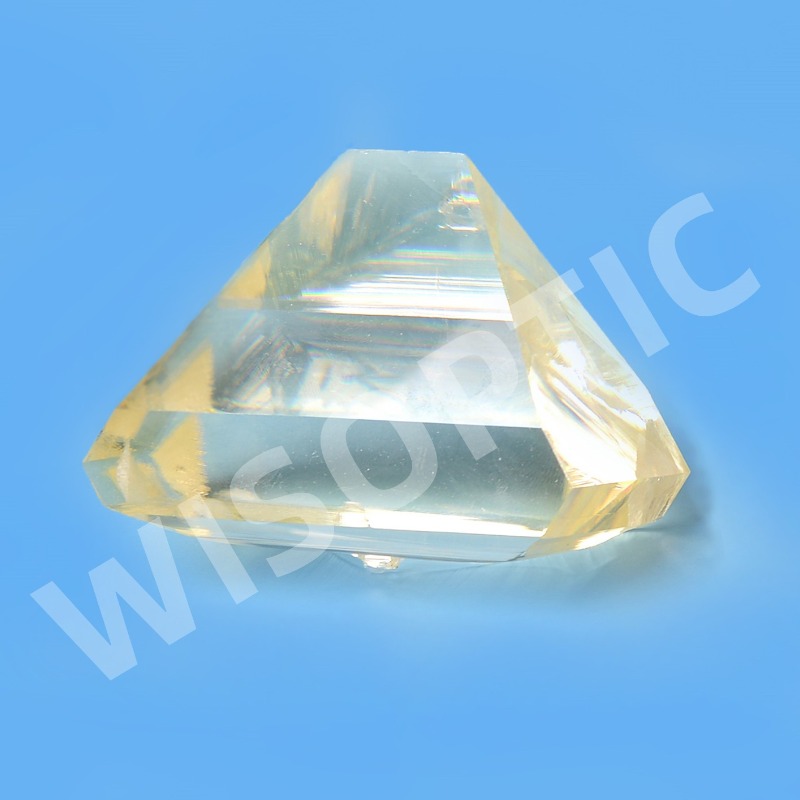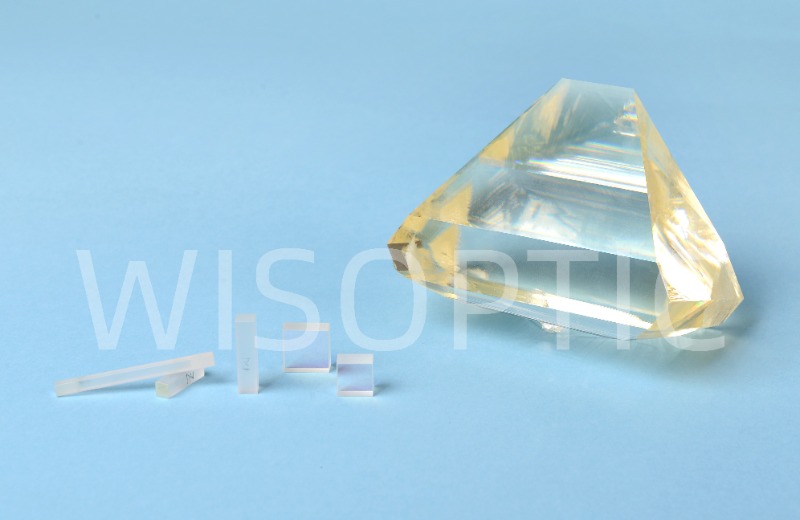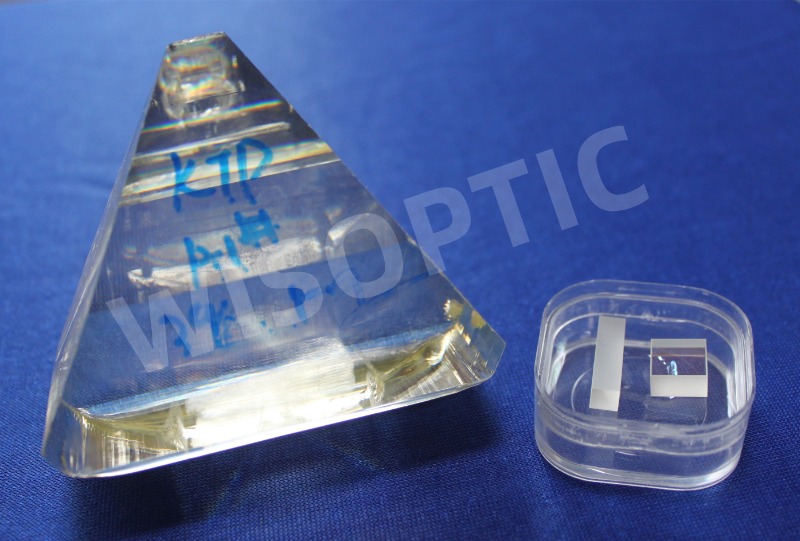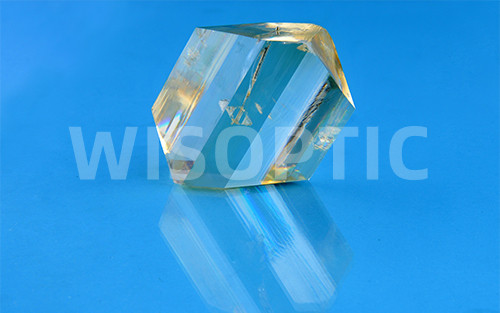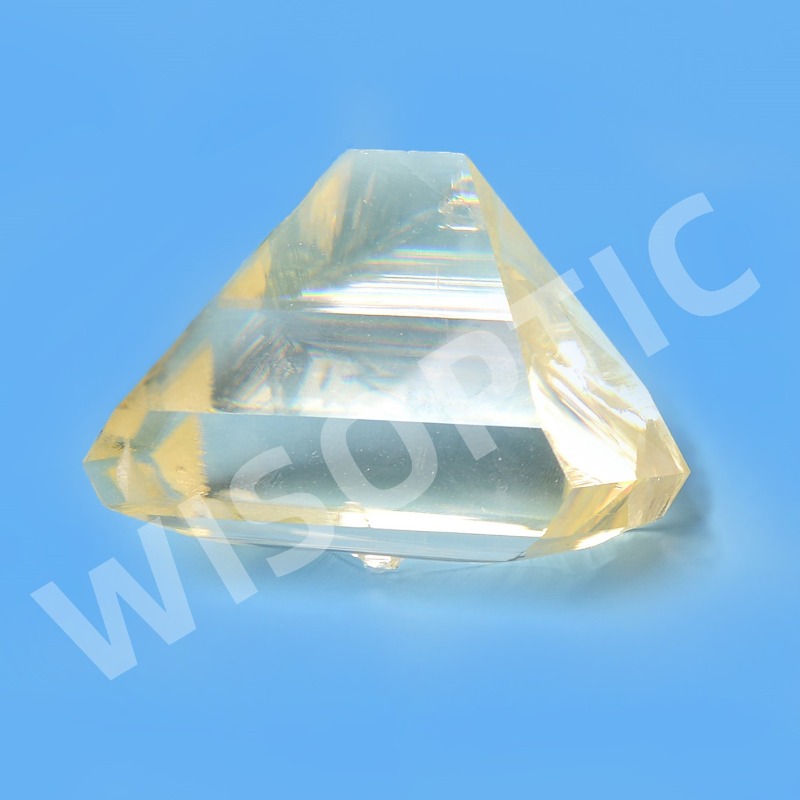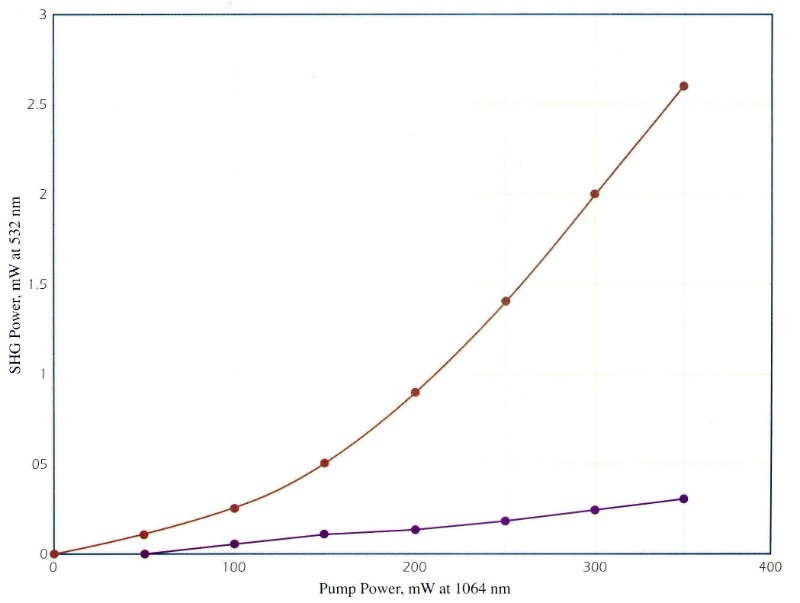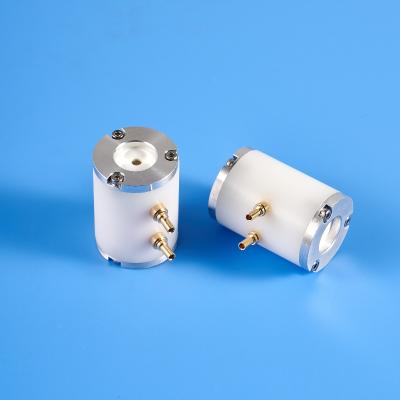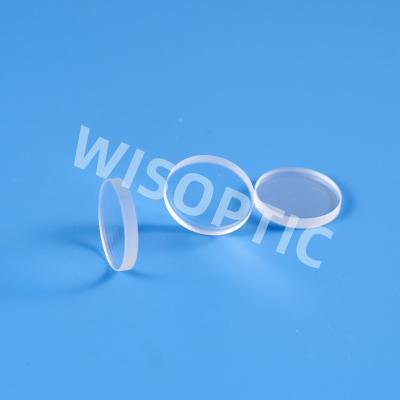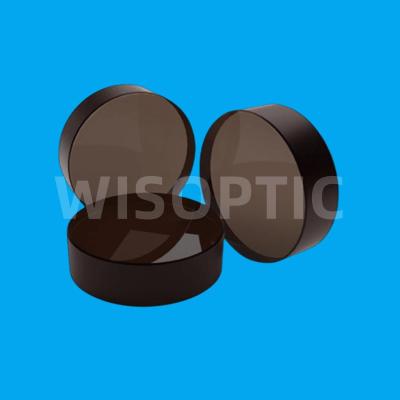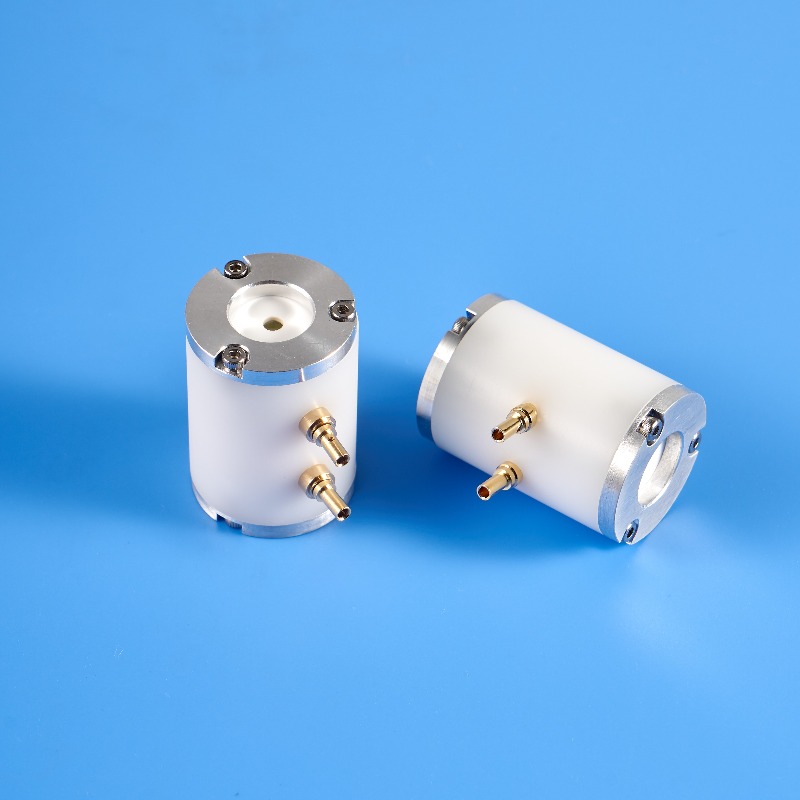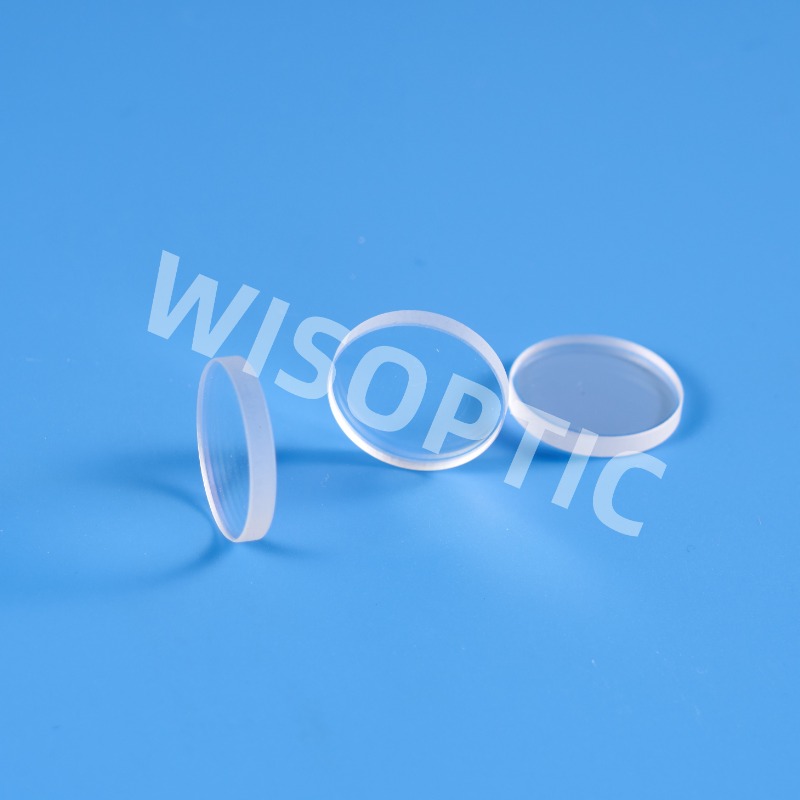KTP/GTR-KTP/PPKTP Crystal
• High homogeneity, excellent internal quality
• Top quality of surface polishing
• Large block for various size (20x20x40mm3, max length 60mm)
• Large nonlinear coefficient, high conversion efficiency
• Low insertion losses
• Very competitive price
• Mass production, quick delivery
KTP (KTiOPO4) is one of the most commonly used nonlinear optical materials. For example, it’s regularly used for frequency doubling of Nd:YAG lasers and other Nd-doped lasers, particularly at low or medium-power density. KTP is also widely used as OPO, EOM, optical wave-guide material, and in directional couplers.
KTP exhibits a high optical quality, broad transparency range, wide acceptance angle, small walk-off angle, and type I and II non-critical phase-matching (NCPM) in a wide wavelength range. KTP also has relatively high effective SHG coefficient (about 3 times higher than that of KDP) and fairly high optical damage threshold (>500 MW/cm²).
WISOPTIC Advantages - KTP
• High homogeneity
• Excellent internal quality
• Top quality of surface polishing
• Large block for various size (20x20x40mm3, max length 60mm)
• Large nonlinear coefficient, high conversion efficiency
• Low insertion losses
• Very competitive price
• Mass production, quick delivery
WISOPTIC Standard Specifications* - KTP
Dimension Tolerance | ± 0.1 mm |
Angle Tolerance | < ± 0.25° |
Flatness | < λ/8 @ 632.8 nm |
Surface Quality | < 10/5 [S/D] |
Parallelism | < 20” |
Perpendicularity | ≤ 5' |
Chamfer | ≤ 0.2 mm @ 45° |
Transmitted Wavefront Distortion | < λ/8 @ 632.8 nm |
Clear Aperture | > 90% central area |
Coating | AR coating: R<0.2% @ 1064nm, R<0.5% @ 532nm |
Laser Damage Threshold | 500 MW/cm2 for 1064nm, 10ns, 10Hz (AR-coated) |
* Products with special requirement upon request. | |
Main Features - KTP
• Efficient frequency conversion (1064nm SHG conversion efficiency is about 80%)
• Large nonlinear optical coefficients (15 times that of KDP)
• Wide angular bandwidth and small walk-off angle
• Broad temperature and spectral bandwidth
• Moisture free, no decomposition below 900°C, mechanically stable
• Low cost compare with BBO and LBO
• Gray-tracking at high power (regular KTP)
Primary Applications - KTP
• Frequency doubling (SHG) of Nd-doped lasers (particularly at low or medium-power density) for green/red light generation
• Frequency mixing (SFM) of Nd lasers and diode lasers for blue light generation
• Optical parametric sources (OPG, OPA, OPO) for 0.6-4.5µm tunable output
• E-O modulators, optical switches, directional couplers
• Optical waveguide for integrated NLO and E-O devices
Physical Properties - KTP
Chemical formula | KTiOPO4 |
Crystal structure | Orthorhombic |
Point group | mm2 |
Space group | Pna21 |
Lattice constants | a=12.814 Å, b=6.404 Å, c=10.616 Å |
Density | 3.02 g/cm3 |
Melting point | 1149 °C |
Curie temperature | 939 °C |
Mohs hardness | 5 |
Thermal expansion coefficients | ax=11×10-6/K, ay=9×10-6/K, az=0.6×10-6/K |
Hygroscopicity | non-hygroscopic |
Optical Properties - KTP
Transparency region | 350-4500 nm | ||||
Refractive indices | nx | ny | nz | ||
1064 nm | 1.7386 | 1.7473 | 1.8282 | ||
532 nm | 1.7780 | 1.7875 | 1.8875 | ||
Linear absorption coefficients (@ 1064 nm) | α < 0.01 / cm | ||||
NLO coefficients (@1064nm) | d31=1.4 pm/V, d32=2.65 pm/V, d33=10.7 pm/V | ||||
Electro-optic coefficients | Low frequency | High frequency | |||
r13 | 9.5 pm/V | 8.8 pm/V | |||
r23 | 15.7 pm/V | 13.8 pm/V | |||
r33 | 36.3 pm/V | 35.0 pm/V | |||
r42 | 9.3 pm/V | 8.8 pm/V | |||
r51 | 7.3 pm/V | 6.9 pm/V | |||
Phase matching range for: | |||||
Type 2 SHG in x-y plane | 0.99÷1.08 μm | ||||
Type 2 SHG in x-z plane | 1.1÷3.4 μm | ||||
Type 2, SHG@1064 nm, cut angle θ=90°, φ=23.5° | |||||
Walk-off angle | 4 mrad | ||||
Angular acceptances | Δθ=55 mrad·cm, Δφ=10 mrad·cm | ||||
Thermal acceptance | ΔT=22 K·cm | ||||
Spectral acceptance | Δν=0.56 nm·cm | ||||
SHG conversion efficiency | 60~77% | ||||
Key Specifications of GTR-KTP
Dimensions | As large as 10×10×15mm |
Extinction Ratio | >25 dB |
Optical Transparency Range | 500~2500 nm |
Laser-induced Damage Threshold | >600 MW/cm2 @1064nm,10ns,10Hz, AR coated |
Insertion Loss | <1.0% @1064nm |
Operation Temperature | -40 ℃~+70 ℃ |
Frequency Range | as high as 4MHz |
Key Specifications of PPKTP
Optical Transparency Range: 0.40µm - 4.0µm
Dimensions: 1.0 mm (T)×1.0~5.0mm (W)×1.0~30.0mm (L)
Double Frequency Efficiency: PPKTP vs KTP
Test conditions: length of crystal = 10.0 mm, laser pulse width = 10 ns,pulse repetition rate = 2 kHz
Please note: PPKTP’s phase matching temperature depends on its polarization period, the shorter the period, the lower the temperature. The "best match temperature" depends on the customer's requirement, and there is often some difference between the design value and the measured value. It is recommended that the temperature should be designed as high as possible. Normally, higher matching temperature give higher damage threshold.

